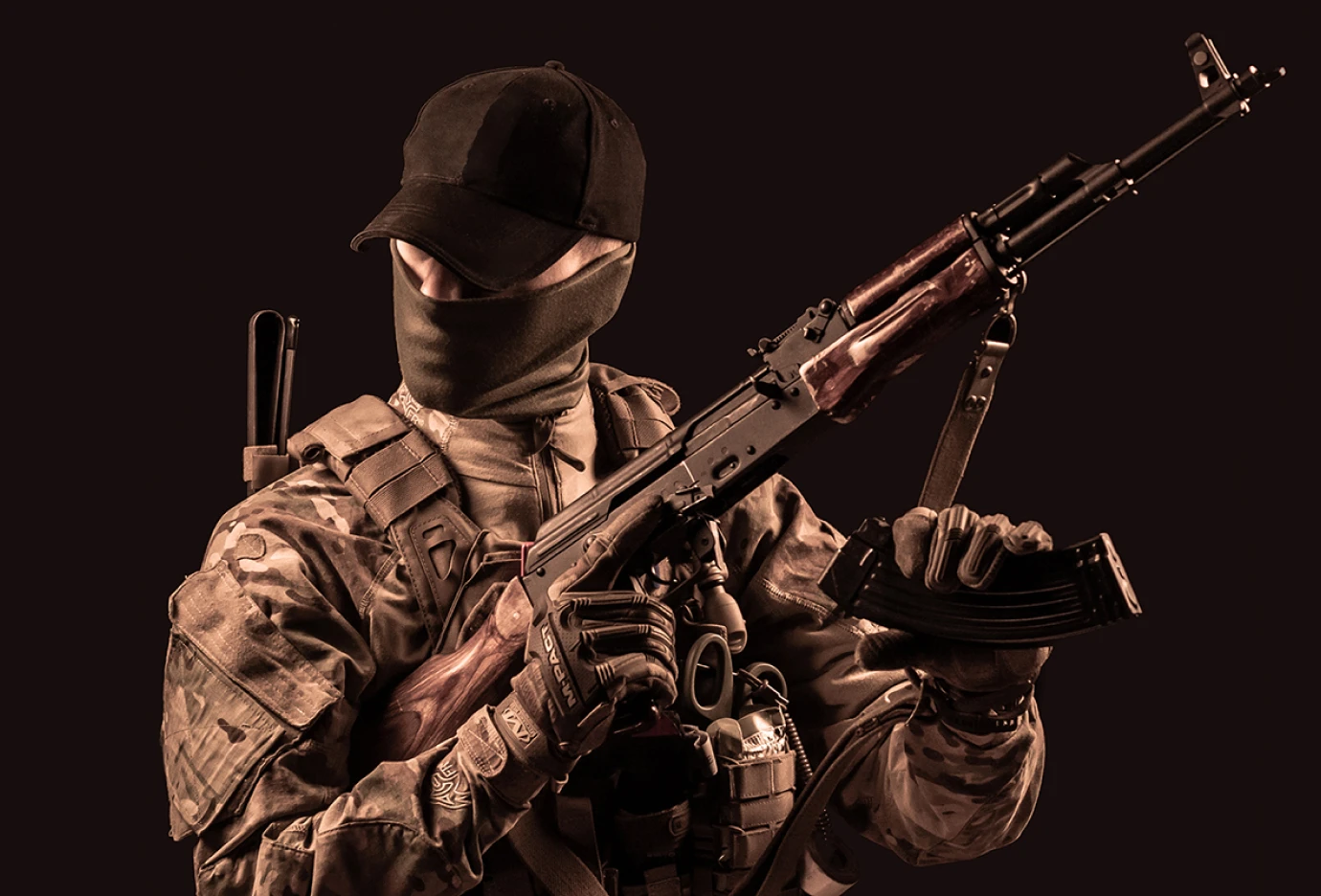There are several positions for shooting with a pistol and other weapons: standing, prone, kneeling, etc. The basic one is the standing position. It is fundamental, so it is worth getting the hang of it first. Later you can try other shooting techniques.
Body position
When shooting from a standing position with a pistol, the shooter takes a position like a gymnastic stance:
- Feet shoulder width apart;
- The weight of the body is evenly distributed on both feet;
- The feet are at a slight angle to each other, or the “working” foot is forward and the other foot is diagonally behind it;
- The “working” arm is extended forward as if you were trying to reach the target, with the elbow relaxed but locked. The other arm is bent at a 120-degree angle.
- The body is straight – you should not lean back or forward.
Many beginners often violate the latter rule and lean forward or backward when aiming – it seems to them that it is better to take the target on the front sight. That’s why you should carefully watch your movements and keep your body more or less straight. Only slight deviation is allowed.
Leg position when shooting standing up
This is the most important point, because the accuracy of the shot depends on strong support. It is most comfortable to stand with your feet shoulder-width apart (naturally, as you like). The angle between the toes can be up to 40 degrees. Not more, otherwise you lose your fulcrum.
- Why should your feet be shoulder width apart? It is a reasonable and natural position for the human body.
- Too narrow a foot position brings the fulcrums closer together and is detrimental to stability, especially in a strong wind. It also negatively affects the performance of speed shooting or shooting connected with fast movements and stops, for example, when running over, rolls, etc.
- Too wide stance (more than shoulder width) causes excessive muscle tension and makes it difficult to “twist” the torso when we are shooting at different targets and need to turn quickly.
- The toes play a significant role in maintaining balance. Therefore, you should try to allow as much freedom of movement as possible. You should not wear shoes that are too tight and cramped.
- Regarding an even weight distribution on both feet, it is worth noting that most experts recommend leaning more on the foot standing on the back, and a little closer to the toe. This activates the lower leg muscles, that help you maintain balance and keep performance.
Advantages of shooting standing up
Why is the standing position considered “number one” among all other positions? Although it has a couple of serious drawbacks – insufficient stability (only two feet) and insufficient protection (a person standing at full height is a highly visible target). But all these disadvantages are outweighed by two positive points:
- The range of fire is the best. Standing position gives the shooter a wide field of view – almost 360 degrees. When standing, it’s easy to turn your head to different directions and keep an eye on everything that’s going on. And from a standing position, the angle of view and its breadth are the best in terms of shooting.
In contrast: the prone, seated and kneeling positions are significantly inferior in this respect to the standing position. The prone position is considered to be especially weak for active fire.
- The speed of taking position is excellent. In the standing position, the shooter has the greatest agility and can change his body position in a split second, which is sometimes a decisive factor.
In contrast, the prone position, though it’s the most stable, is not very manoeuvrable – only the roll is available. The kneeling position is considered satisfactory.
How to hold the gun correctly when shooting standing up
The gun handle is held in the shooter’s hand with fingers in front and palm in back. The plane of the back of the grip should not be at an angle to the palm surface (as is always the case with a large grip). It should be adjacent to the palm.
The first joint of the index finger should rest on the trigger, and the rest of the finger should not touch the gun. And, importantly, the position of the gun in the hand should always be constant.
Sometimes beginners try to overcome the resistance of the trigger and press on the trigger with the second joint of the finger. This causes improper positioning of the gun in the hand and causes bullets to deflect.
How to aim correctly when shooting standing up
- Tilt your head slightly to the right so the gun sight is in line with your “working” eye. Adjust by slightly changing the position of your head and shoulders until the gun is aimed at the target.
- Breathe slowly and relax while aiming.
- Concentrate on the fly and point it at the target or at a specific point between the target and the fly. You do not need to focus precisely on the target – it should be in the background after the fly.
- Breathe evenly before the shot, then take a deep breath and a full exhalation, freeing your lungs. It is now of exhalation that the shot is made.
Many beginners neglect this rule, but there is a physiological explanation. During the inhalation and exhalation, the volume of the lungs and, accordingly, the volume of the body changes, and it reflects on the position of the shoulders and arms, which are directly involved in the shooting. For an accurate shot, the body must be perfectly still.
After aiming, slowly press the trigger with the last phalanx of your index finger toward the rear of the gun. The movement should be straight, slow, and steady. Slowly release your finger until the trigger clicks. Voila – you can go check the target!







